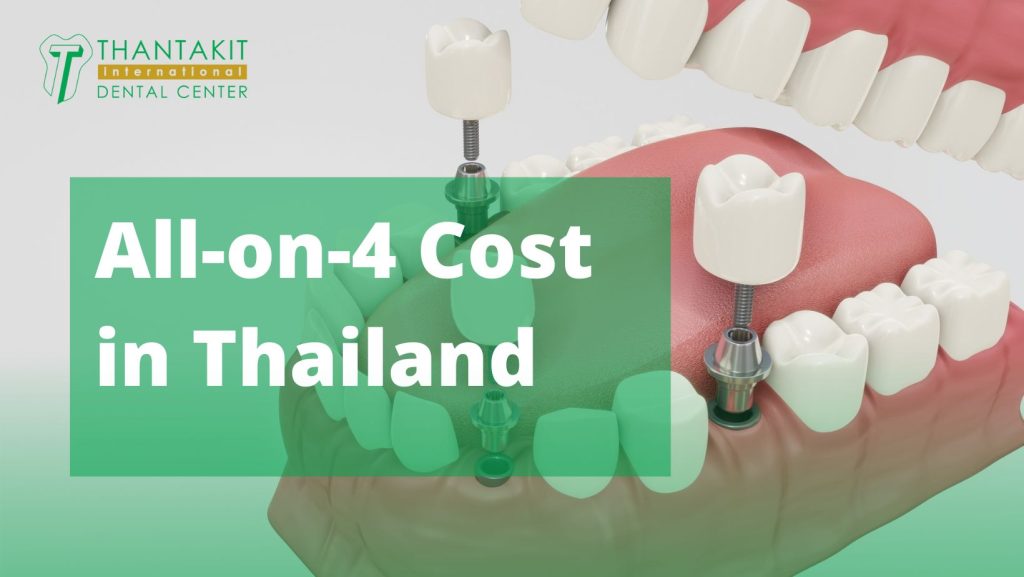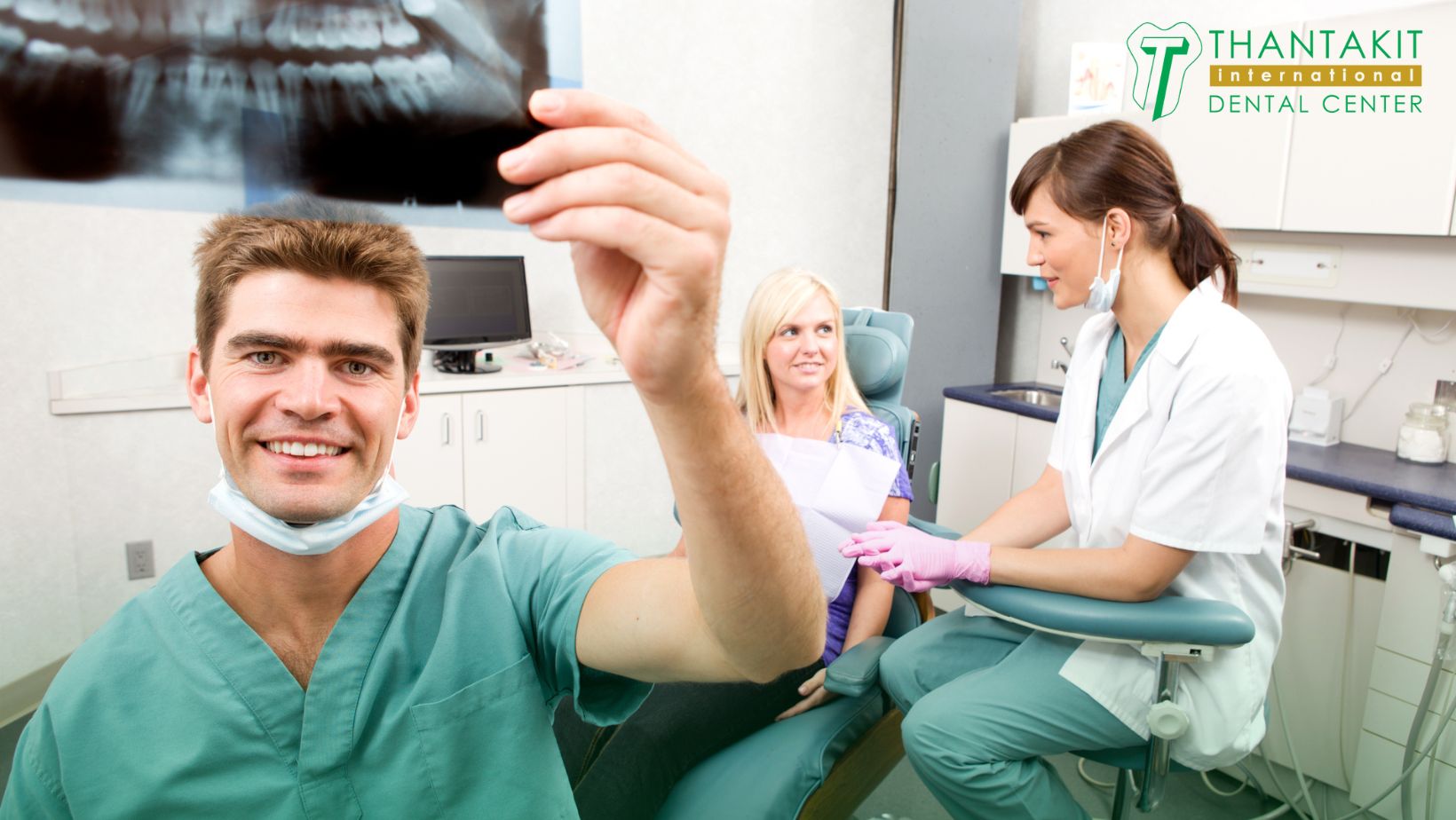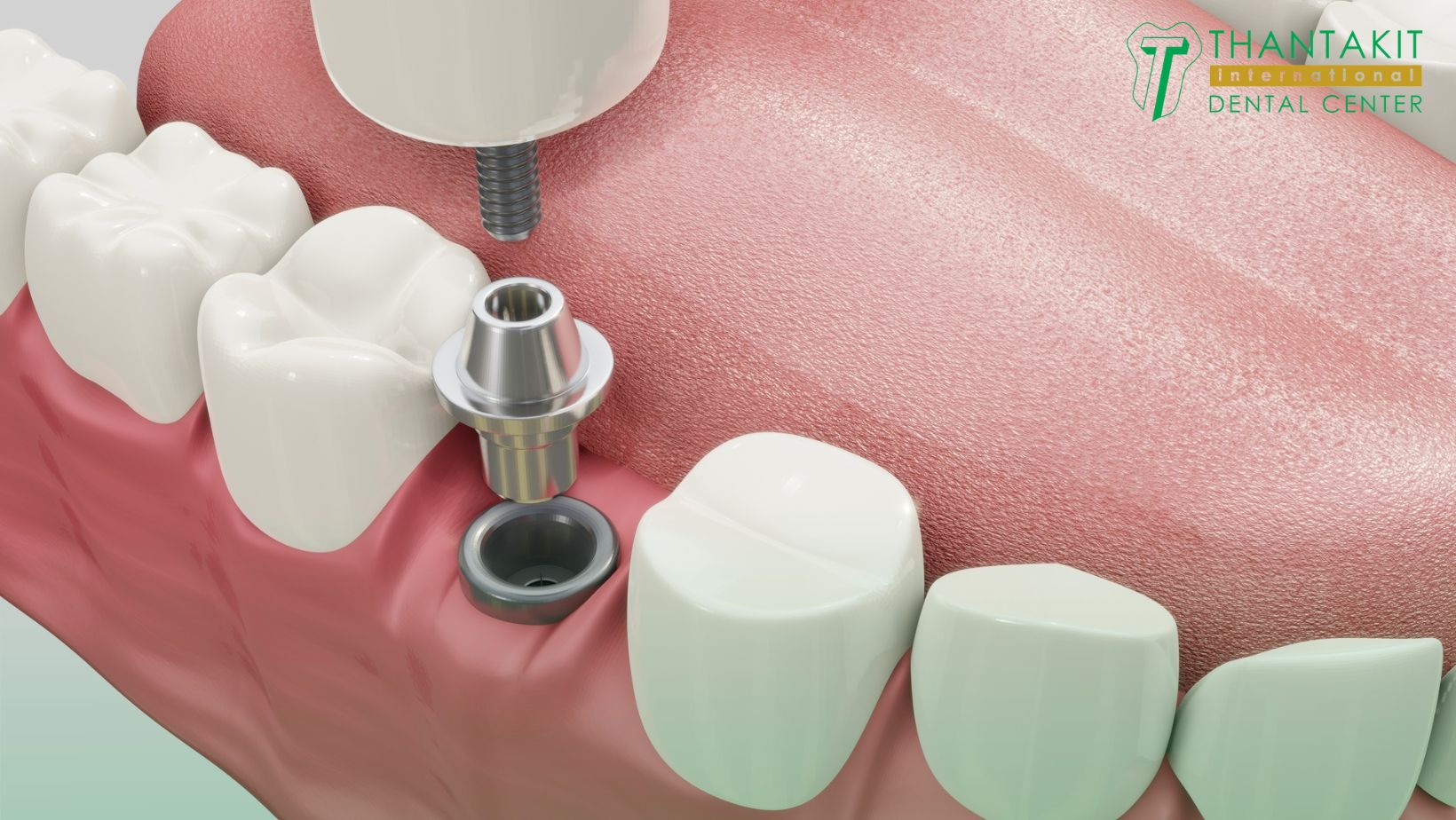A dental implant is a metal stud or post that your dentist drills into an empty tooth socket from the gums to the jaw to simulate the tooth root. This serves as a foundation for crowns or bridges to cling to the mouth.
On one hand, if the implant is the artificial tooth root, then the crown or bridge is the artificial tooth that works in tandem to replace missing teeth.
On the other hand, dental implant surgery is the process of replacing missing teeth with the aforementioned metal stud. You’ll need to go under the knife to cut gum and drill through the jawbone.
Finally, all-on-4 implants are when a patient orders four implants to be placed into their mouth, usually to do full dental restoration of multiple missing teeth.
Page Contents
Introduction to All-on-4 Implants
The idea behind All-on-4 implant surgery is that they serve as a four-way foundation or anchors to crowns or bridges, simulating how natural teeth are anchored to your jaw instead of false teeth bonded with dental adhesive.
-
Brief Overview: Four metal studs are placed in four quadrants of your mouth to replace the missing set of teeth there. Instead of putting individual implants for every missing tooth, it’s more practical and less painful to do quadrant posts.
-
Target Audience: The patients most likely to benefit from All-on-4 implants are those with severe tooth loss but aren’t so old that their body could take the toll needed to do an All-on-4 implant surgery.
This is also a fixed, long-term solution when it comes to replacing teeth without using temporary false teeth you have to put in and remove as needed.
-
Importance of Cost: Cost is an obvious major factor for many patients, especially those in the West where at times their dental insurance doesn’t cover for dental implant surgery, especially All-on-4, All-on-6, and above.
Factors Affecting All-on-4 Costs in Thailand
Thailand is a great place to avail of dental tours that give you a more affordable dental implant solution even when you take travel costs into consideration (if you’re from the U.S. or U.K.).
Southeast Asians, Australians, and New Zealanders can get all the cost-effective advantages of Thai dental implants in places like Thantakit Dental Center because of how cheap the travel costs are from their countries to Thailand.
With that in mind, the cost of All-on-4 implants will vary depending on the following.
-
Quality of Materials: Titanium or zirconia materials will naturally impact costs because they’re the strongest and most expensive materials for implant use.
You can get more affordable implants made of porcelain (made of multiple parts) or all-ceramic (less common and used for aesthetic purposes).
Zirconium offers the best of both worlds because it’s strong like titanium but resembles real teeth like porcelain.
-
Dentist Expertise and Experience: You can get relatively cheaper implant surgery in Thailand by going to dental schools or hospitals and having students do it for you instead of trained professionals.
If you wish for less risk and a guarantee of safety, you can instead avail of internationally trained and experienced dentists who offer 5-year warranties for their metal stud implantation expertise.
-
Location and Facility: It’s best to avail of a complete facility like a dental hospital or center with all the apparatuses and paraphernalia available (including an in-house dental lab that makes the custom bridges/crowns).
Dental hospitals might charge less than private clinics by government subsidy. However, going to a private dental center ensures you of extra perks like warranties and better implant materials at cost-effective prices.
-
Additional Services: A great facility or center will also offer you extra services to ensure the integrity of the dental implant process such as consultations and checking to see if you’re a good dental implant candidate in the first place.
The best ones also offer follow-up appointments and aftercare at no extra charge, but that depends on the clinic or center you’ve availed of.
They should also offer you x-rays or digital scans of your mouth to help plan the implant placement and temporary dentures as your actual bridges or crowns are being made.
Average All-on-4 Implant Costs in Thailand
There is a range of costs you need to keep in mind when availing of All-on-4 implant surgery in Thailand. You’ll quickly find that even with travel costs, all of these fees are much cheaper than what’s available to you stateside or locally.
An estimate will be laid out to you during the consultation stage and any unforeseen costs will be updated thusly in the final bill.
-
Initial Consultation and Diagnostic Fees: This only cost from $15 to $35. Full mouth panoramic x-ray scans cost $41 and 3D CT scans cost $144 to $288.
-
Surgical Costs: For All-on-4 dental implants, you can expect to pay $7,600 to $9,600 on average in Thailand compared to $24,000 in the U.S.
-
Implant Material Costs: The material costs range from $1,900 to $2,600 for each single implant. Some come as cheap as $860, but branded implants obviously cost more.
-
Aftercare and Follow-Up Appointments: It also costs $15 to $35. It takes about 5-7 days to make the final prosthesis after implant placement.
Hotel costs as you wait for the custom bridges to be manufactured in Thantakit’s in-house lab costs from ฿1,299 (USD 39, GBP 30, AUD 61, NZD 66) to ฿4,800 (USD 144, GBP 109, AUD 225, NZD 243) per night.
In Thailand, single implants cost $860 to $2600. Meanwhile, in the U.S., the cost of a single implant ranges from $1,500 to $5,000. As for all-on-4 prices, here’s the breakdown:
-
Thailand: All-on-4 implants in Thailand cost ฿265,000 (USD 7898, GBP 5976, AUD 12418, NZD 13366) to ฿334,000 (USD 9954, GBP 7532, AUD 15651, NZD 16846) on average. It could cost all the way up to ฿400,000 (USD 11921, GBP 9020, AUD 18744, NZD 20174) though.
-
United States: All-on-4 implant deals in the U.S. cost from US$12,000 to US$20,000. It could even go up all the way to US$25,000 and US$55,000 per fixed arch.
-
United Kingdom: All-On-4 Dental Implants range from £13,000 to £18,000 (US$16,573 to US$22,948) in the U.K.
-
Australia: The cost of All-on-4 dental implants in Australia can range from AU$17,000 to AU$30,000 (US$11,109 to US$19,608) per arch.
-
New Zealand: The cost of All-on-4 dental implants in New Zealand can range from NZ$24,000 to NZ$40,000 (US$14,222 to US$23,703) per arch.
Why Choose Thailand for All-on-4 Implants?
There are many reasons why you should choose Thailand for your all-on-4 implant needs, chief among them is cost-effectiveness and world-class implant surgery quality. You’ll also get the chance to do actual tours of the Southeast Asian Kingdom.
Yes, it is possible to enjoy the best of both worlds in price and value! Have a wellness dental vacation in Thailand today!
-
Cost Savings: Getting all-on-4 implants in Thailand is not cheap as in low-grade. Instead, it’s cheap because of various factors, such as the lower cost of living in Thailand and the country’s robust healthcare system.
Even if you’re from far away like the U.S. or U.K., it’s still cheaper than the alternative even when you include travel costs. At least it’s a great alternative to Turkey and Mexico.
It’s particularly recommended to countries like Australia and New Zealand because of their nearness and cheapness of travel costs.
-
Quality of Care and Expertise: Thailand’s high standard of care roots from its many public and private hospitals and advanced dental technology available in renowned dental centers such as Thantakit.
To be more specific, you can avail of branded implants from Dentium, MegaGen, BioHorizons, Straumann, and Zeramex at Thantakit at a significantly lower cost but you’re still getting the same quality of care and implant materials.
-
Medical Tourism Appeal: The Land of Smiles also uses its dental tours as a way to entice more tourists unto itself. Thailand has truly earned the reputation as a global hub for medical tourism, addiction recovery tourism, and dental tourism.
Here in Thailand, you’ll get to enjoy perks like English-speaking dentists with international-level training, state-of-the-art dental facilities with advanced digital technology, and the most hospitable of staff.
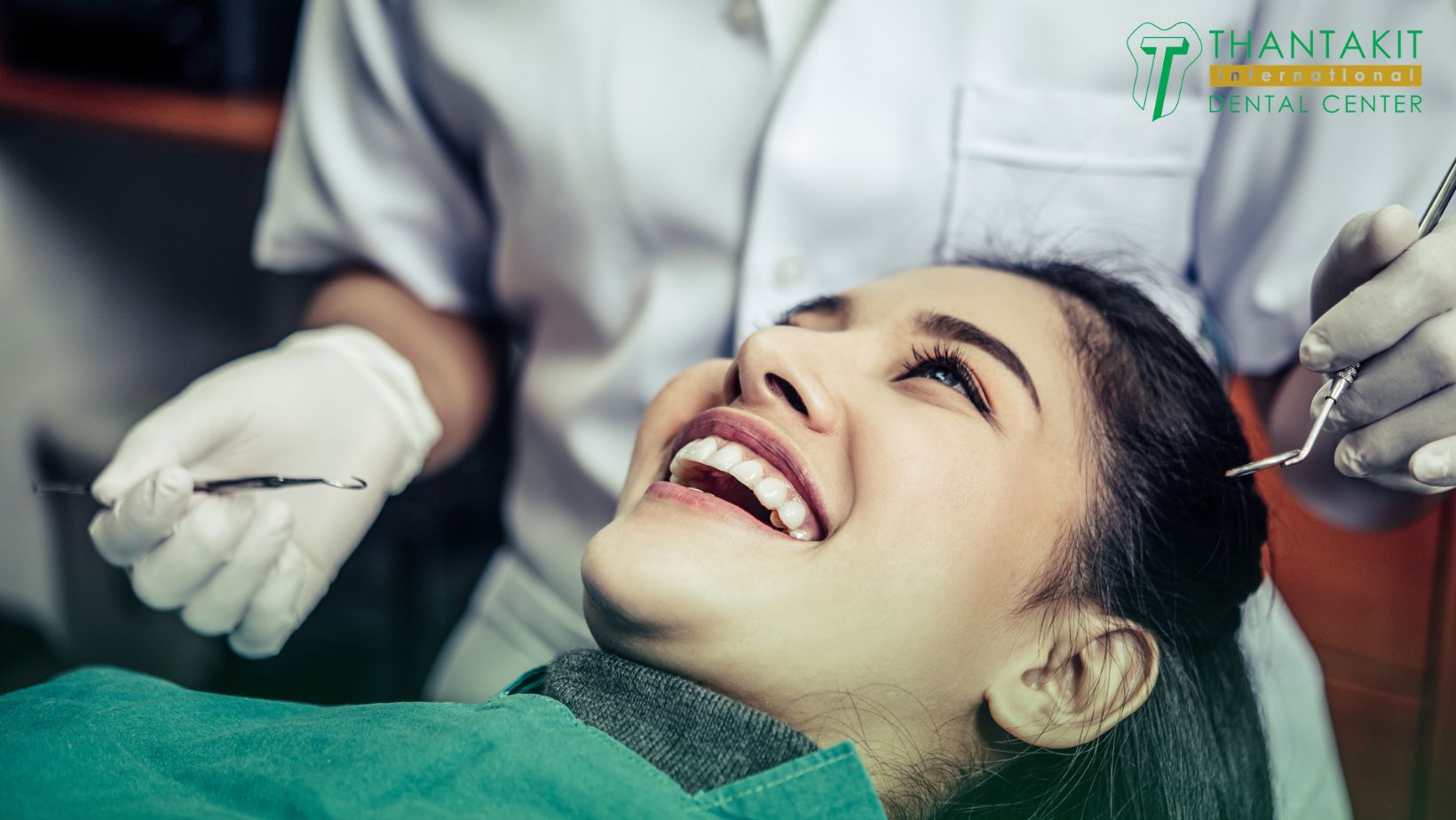
What’s Included in the All-on-4 Package at Thantakit Dental Center?
At Thantakit, you can acquire from All-on-4 to All-on-6 implants in affordable packages for full jaw restoration for ฿340,000 (USD 10133, GBP 7667, AUD 15932, NZD 17148) to ฿600,000 (USD 17881, GBP 13530, AUD 28115, NZD 30261).
Certain brands excluded from the All-on-4 package deals like the BioHorizons Implant System, meanwhile, is available for ฿175,000 (USD 5216, GBP 3947, AUD 8201, NZD 8827) to ฿200,000 (USD 5961, GBP 4510, AUD 9372, NZD 10087) as two implants per arch with different bridge types (3-unit or 4-unit bridges).
-
Package Inclusions: All-on-4 implant package deals also vary in price depending on the brand. Full jaw reconstruction (including multi-unit bridges) with All-on-4 implants cost the following (including surgical costs):
- o Dentium: ฿340,000 (USD 10133, GBP 7667, AUD 15932, NZD 17148)
- o MegaGen: ฿360,000 (USD 10729, GBP 8118, AUD 16869, NZD 18157)
- o Straumann: ฿400,000 (USD 11921, GBP 9020, AUD 18744, NZD 20174)
The surgery’s Dynamic Computer-Aided Navigation by NAVIDENT should cost you ฿8,000 (USD 239, GBP 181, AUD 375, NZD 404) for single-implants and ฿7,000 (USD 209, GBP 158, AUD 329, NZD 354) per implant for 2 implants and above.
We also include discounts, warranties, and fees from consultation to aftercare ($15 to $35) and x-rays and CT scans ($144 to $288) or NAVIDENT package deals ($230 for single-implants and $202 for multiple implants).
-
Special Amenities for International Patients: Thantakit also has partner hotels you could stay in as you get your custom-fit bridges and crowns made. Just select the bedroom suite of your choice and include their fees in your bill.
These hotels include the Grand Mercure Bangkok Atrium Hotel, RAMADA by Wyndham Bangkok Sukhumvit 11, Manhattan Sukhumvit Bangkok, Lancaster Hotel, and Royal Suite Hotel. They cost $37 to $138 per night.
-
Transparency in Pricing: You can easily check the page for Thantakit prices for more details. Every fee is laid out bare from the start during the consultation stage so that everyone is on the same page.
The center is committed to competitive pricing and transparency. We offer cost-effective prices, which means that if other clinics offer anything cheaper, we can at least assure you ours have better quality on top of a fair price.
Traditional one-day teeth installment of All-on-4 implants require remaking the final prosthesis after 6 months.
In contrast, Thantakit uses fully screw-retained high impact acrylic (KULZER®) with reinforced metal substructure for long-term final prosthesis after only 5-7 days.
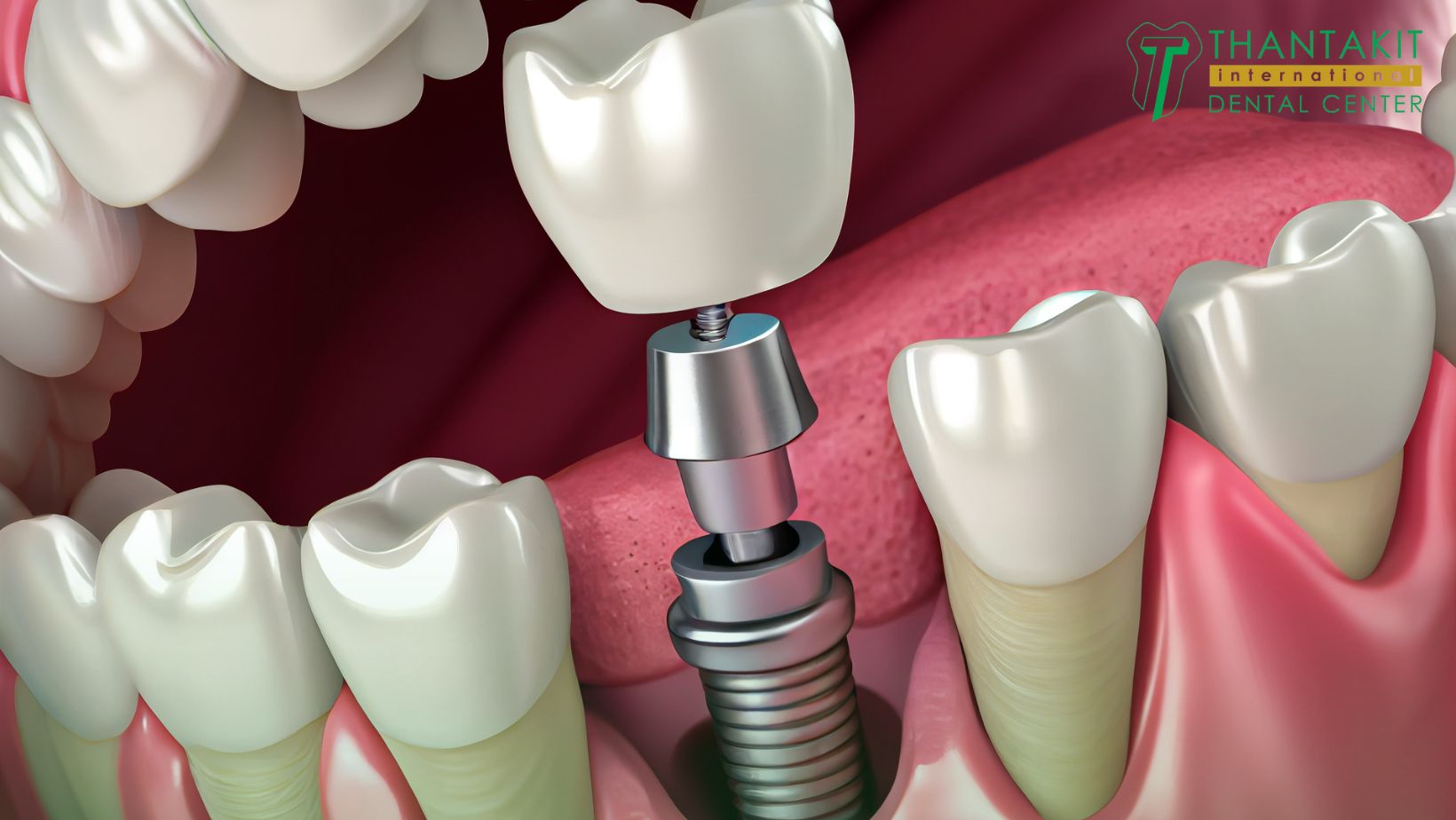
Common FAQs about All-on-4 Costs in Thailand
Let’s now talk about the most frequently asked questions about All-on-4 costs in Thailand.
-
Are there hidden fees in the All-on-4 procedure? Many clinics and centers such as Thantakit are completely transparent about the cost of the consultation, surgery, scans, and aftercare and how long it takes to process the bridges for full jaw reconstruction (and their respective fees).
Other clinics only show you the cost of the procedure itself, hiding fees for scans, the prosthesis or bridges, and the additional hotel and travel costs.
Because you’ll have to wait a week, you’ll need to pay extra for the hotels and their respective suites. You’ll get discounts and deductions depending on which package you avail of, which also entails free or discounted aftercare.
-
How long does recovery take? Most patients should end up fully recovered after 2 weeks of implant surgery. Expect the implant site to feel tender. However, they should be normal and healed by then.
The implants will continue healing and bonding with the jawbone over 3 months to half a year, but the initial healing process should be over after just 2 weeks.
-
Can insurance cover part of the cost? Consult your insurance provider if they offer coverage for international dental tourism services. There are dental insurance plans that could cover at least some of the implant costs.
Some might offer coverage, and some might not, but usually the whole point of doing dental tourism is to be able to afford paying for an All-on-4 implant procedure out-of-pocket anyway.
Check with the center or clinic if they have flexible payment plans for those who couldn’t afford paying the bill in one fell swoop.
-
What if you need follow-up treatment? You might need to do some follow-up visits to Thailand after the 3-month mark. The interlude enables the dentist to scrutinize the development of your implant’s integration to your jaw.
During this visit, you can ask questions or reveal any complications or problems along the way to recovery. This will also help the doctor make the assessments needed for the next phase of aftercare.
Aside from this, it’d be wise to undergo your usual regular checkups to the dentist every six months.
Testimonials and Case Studies
Let’s now talk about Thantakit testimonials and case studies.
-
Patient Stories:
Australian Patient Getting Dental Implants with Porcelain Crowns-Bridges
“The Thantakit Dental Center is a place I’d definitely recommend to friends and family. Why? They epitomize professionalism, friendliness, and first-class dental work at the fraction of the price of my local dentist!
“I’ve actually consulted with several clinics and centers from all over the world. Thantakit stood out because they had English-speaking staff assistants, and administrators that are easy to work with.
“Furthermore, their dental specialists really proved themselves when doing expert-level implant surgery. It’s like I’ve got a new lease on life and my smile!”
American Patient Getting All-on-4 Implant Surgery
“I had my teeth fixed at Thantakit exactly because it’d cost me an arm and a leg to have it done at home. I don’t regret going at all, and I even had a little vacation afterwards as I recovered from the surgery.
“Thantakit offered professional quality implant dentistry. It’s the best I’ve ever experienced in all my years of working as an expat. I highly recommend the company to my workers and partners. Best regards!”
-
Video Testimonials:
-
Results and Satisfaction: As far as the satisfaction rate among All-on-4 patients for Thantakit is concerned, majority of them are quite satisfied with the results. Across the board, they enjoy high-quality outcomes and cost savings.
This is especially true with the dental center since they’re offering premium branded implant materials like Dentium and Straumann at amazingly low costs. They’re normally only available to the rich and famous, in fact.
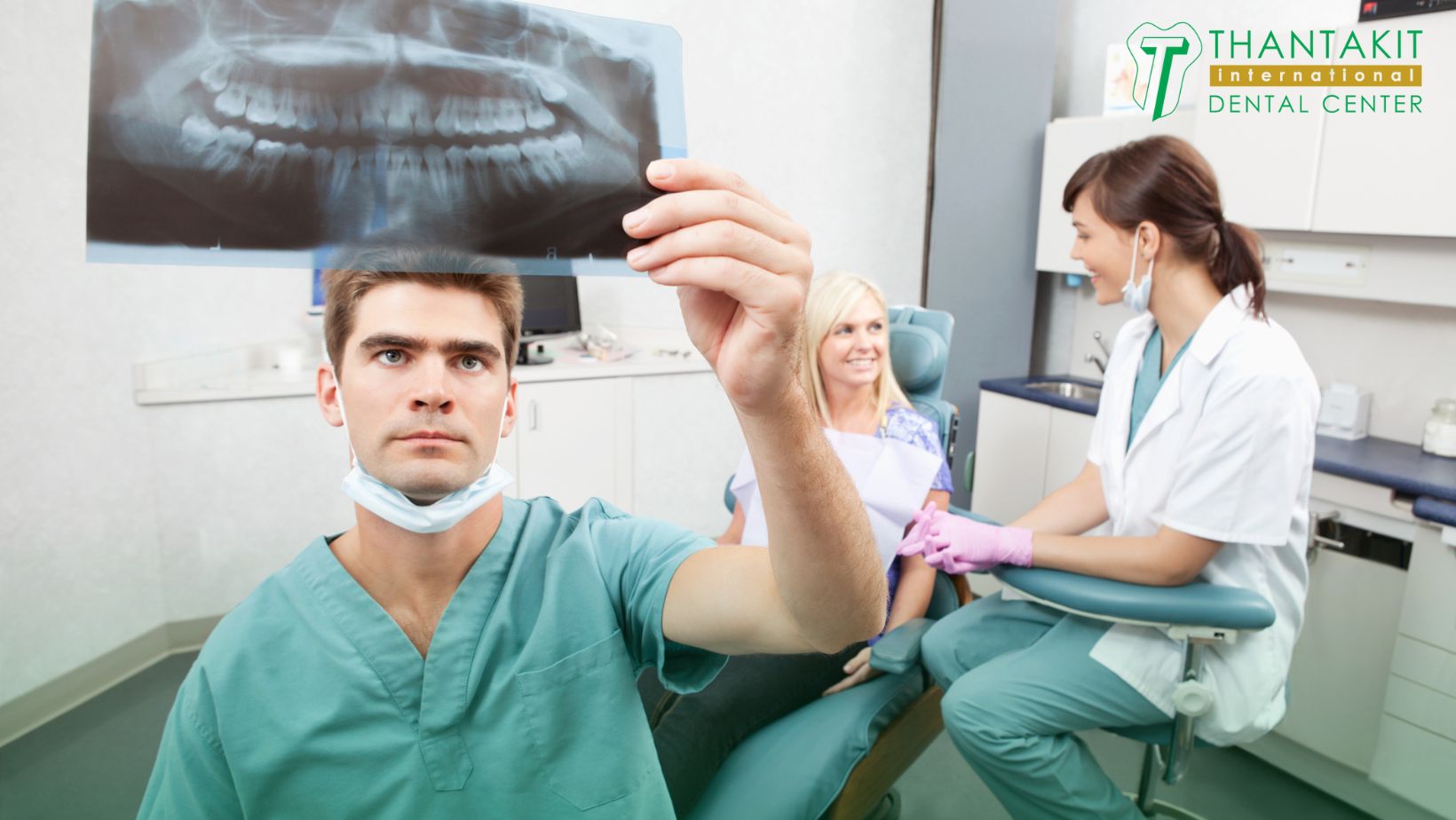
Final Thoughts and Cost Comparison Checklist
Long story short, Thantakit Dental Center offers some of the best and brightest dental experts to give you relatively pain-free and relaxing All-on-4 implant surgery that shouldn’t last you any longer than a week to complete.
Even when taking the multi-unit crowns, bridges, or full jaw reconstruction needed to complete the procedure, it should all be done post-haste.
What’s more, the center also has partner hotels to get you good prices on bedroom suites as you wait for your next visit.
Even when you consider how Thantakit is among the most expensive Thai All-on-4 implant services of the bunch, this is only because it uses the best branded materials from Dentium, MegaGen, and Straumann.
These implants normally cost upwards of $16,000 and $55,000 in the U.S. or U.K., and that’s not including the rest of the services!
-
Cost Comparison Checklist:
Thailand Dental Clinics or Centers Breakdown of Costs for All-on-4 Package Deals Estimated Overall Cost Hachi Dental Clinic Consultation/Aftercare: $15 – $35
Dental X-ray or CT scan: $14 – $115
Hotel Fees (5-7 days): $37 – $138 per night
All-on-4 Implant Materials, Crown, and Surgery Fee: $3,320 ($830 per implant)$3,549 to $4,471 Kitcha Dental Clinic Consultation/Aftercare: Free
Dental X-ray or CT scan: $7 – $115
Hotel Fees (5-7 days): $37 – $138 per night
All-on-4 Implant Materials, Crown, and Surgery Fee: $5,760 – $8,640 ($1,440 – $2,160 per implant)$5,952 to $9,721 SOL Dental Clinic Consultation/Aftercare: $15 – $35
Dental X-ray or CT scan: $7 (Bitewing X-ray)
Hotel Fees (5-7 days): $37 – $138 per night
Bone Augmentation: $570 (as needed)
All-on-4 Implant Materials, Crown, and Surgery Fee: $5,200 – $8,400 ($1,300 – $2,100 per implant).$5,422 to $10,013 Edelweiss Dental House Consultation/Aftercare: $35
Dental X-ray or CT scan: $7 – $100
Hotel Fees (5-7 days): $37 – $138 per night
All-on-4 Implant Materials, Crown, and Surgery Fee: $4,400 – $8,960 ($1,100 – $2,240 per implant)$4,662 to $10,096 ChiangMai International Dental Clinic Consultation/Aftercare: Free
Dental X-ray or CT scan: $144 – $288
Hotel Fees (5-7 days): $37 – $138 per night
Digital Surgical Guide: $206 per implant (optional)
All-on-4 Implant Materials, Crown, and Surgery Fee: $8,824 All-on-4 package deal.$9,153 to $10,902 Thantakit International Dental Center Consultation/Aftercare: $15 – $35
Dental X-ray or CT scan: $144 – $288
NAVIDENT-Aided Surgery: $202 per implant (optional)
Hotel Fees (5-7 days): $37 – $138 per night
All-on-4 Implant Materials, Crown, and Surgery Fee:
$9,784 – $11,510 (full reconstruction)$10,143 to $13,642
Contact Thantakit for a Cost Estimate Today
Contact Thantakit right away for a virtual quote or personalized consultation. We have among the best state-of-the-art equipment and world-class dentists available in Thailand.
On top of all that, you’ll also get to enjoy beautiful Thailand as you indulge in a wellness vacation of sorts. It’s a round trip to the Land of Smiles for business and pleasure!
If you wish to go to the next step towards your All-on-4 consultation, go book an appointment with Thantakit today. It will just take you three easy steps to do so!
Thantakit International Dental Center is Thailand’s longest established dental center. Situated in Bangkok, our clinic is renowned across the world as a destination for world-class dentistry, with most of our patients flying to us from Australia.
Please contact us today and get a FREE dental consultation.











